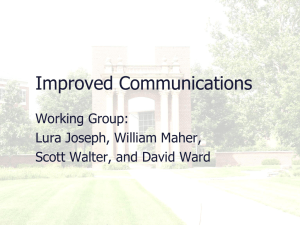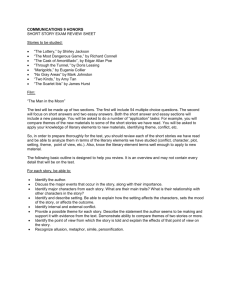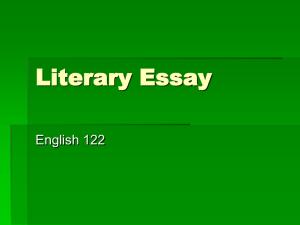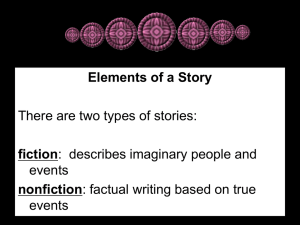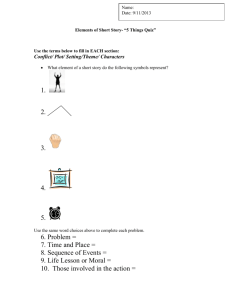Elements of Fiction Prose I
advertisement
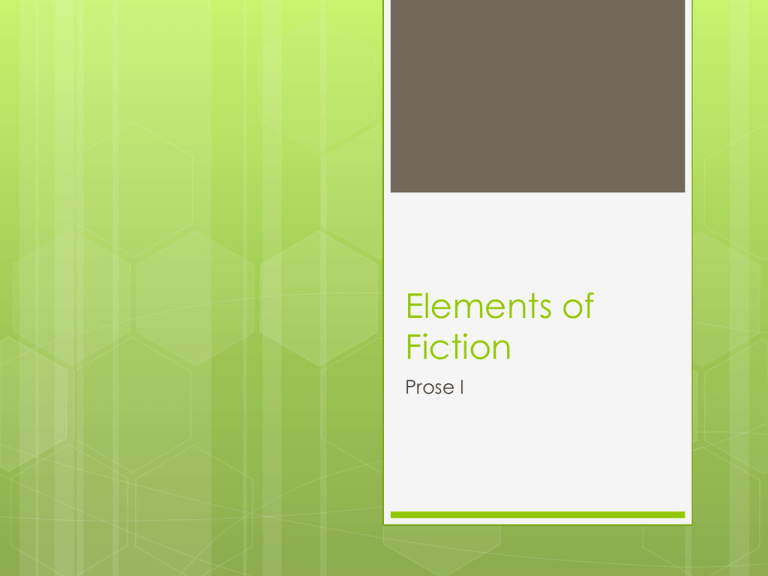
Elements of Fiction Prose I Plot the sequence of events that compose a story Plot (contd) Conflict is a clash of actions, ideas, desires or wills. It can be: person vs. person. person vs. external force person vs. herself/himself Plot (contd) Artistic Unity very significant; nothing irrelevant exists; related to other part(s) of the story. Plot (contd) Plot Manipulation and Fabulation any unjustified or unexpected turns or twists, false leads, and misleading information; fabulation is the introduction of the unrealistic or gothic elements in a realistic setting. Plot (contd) Story Ending happy Ending the stereotypical expectation is that the protagonist can solve all the problems, defeat the enemy, win the girl, and live happily forever. unhappy ending; the protagonist fails to solve the problem, defeat the villain, win the girl. for the writers of serious fiction, the unhappy endings are more likely to raise significant issues concerning life and living. Character (contd) Character Types a Flat character a Round character (complex and many-sided) a Stock character (stereotyped character) a Static character (remain the same from the beginning to the end of the story) a Dynamic (undergoes permanent change) The change must be: 1. within the possibilities of the character; 2. sufficiently motivated; and 3. allowed sufficient time for change. Character (contd) Protagonist and Antagonist the protagonist (the central character) the antagonists (forces against the protagonist, whether persons, things, conventions of society, or traits of their own character) Theme the controlling idea or central insight. It can be 1. a revelation of human character; 2. may be stated briefly or at great length; and 3. a theme is not the "moral" of the story. Theme (contd) in the form of a statement as a generalization about life; avoid names of characters or specific situations in the plot not too general, neither too specific Theme (contd) the central and unifying concept of the story. 1. It must account for all the major details of the story. 2. It must not be contradicted by any detail of the story. no one way of stating the theme of a story. no familiar saying, aphorism, or cliché Points Of View Omniscient - a story told by the author, using the third person Limited Omniscient - the author associates with a major or minor character; this character serves as the author's spokesperson or mouthpiece. Points Of View (contd) objective 1. 2. 3. or dramatic displays authorial objectivity. sets the story in the present. relies heavily on external action and dialogue. Symbol A. B. C. names objects actions Symbol (contd) 1 signals its existence by emphasis, repetition, or position. 2. is established and supported by the entire context of the story. 3. has its meaning inside not outside a story. 4. must suggest a meaning different in kind from its literal meaning. 5. has a cluster of meanings. Irony the discrepancy or incongruity the difference between appearance and reality the difference between expectation and fulfillment, Irony (contd) A. B. C. Verbal irony - stated vs intended. Dramatic irony - what a character says vs what is true. Irony of situation appearance vs reality, what is vs what would seem


